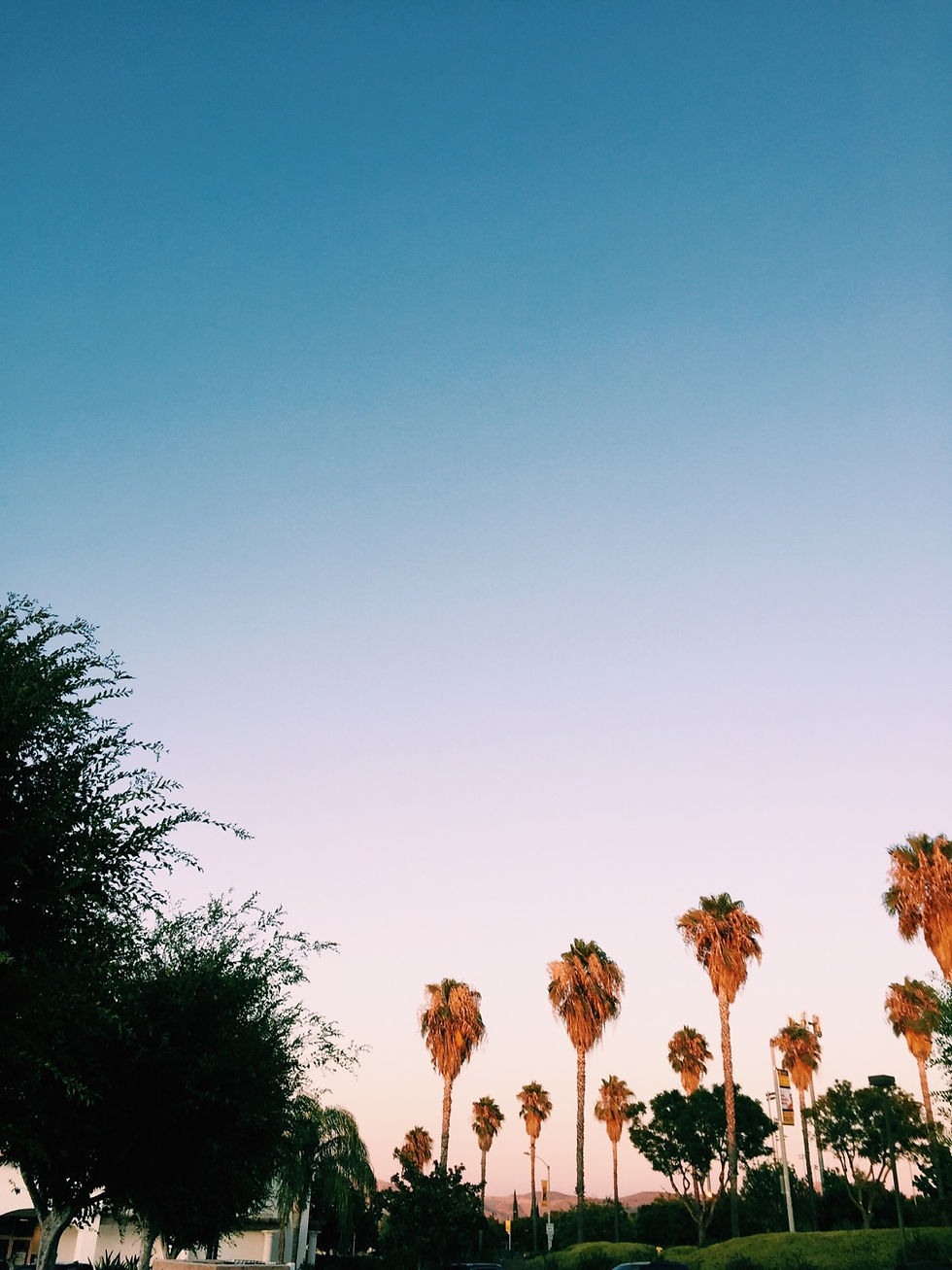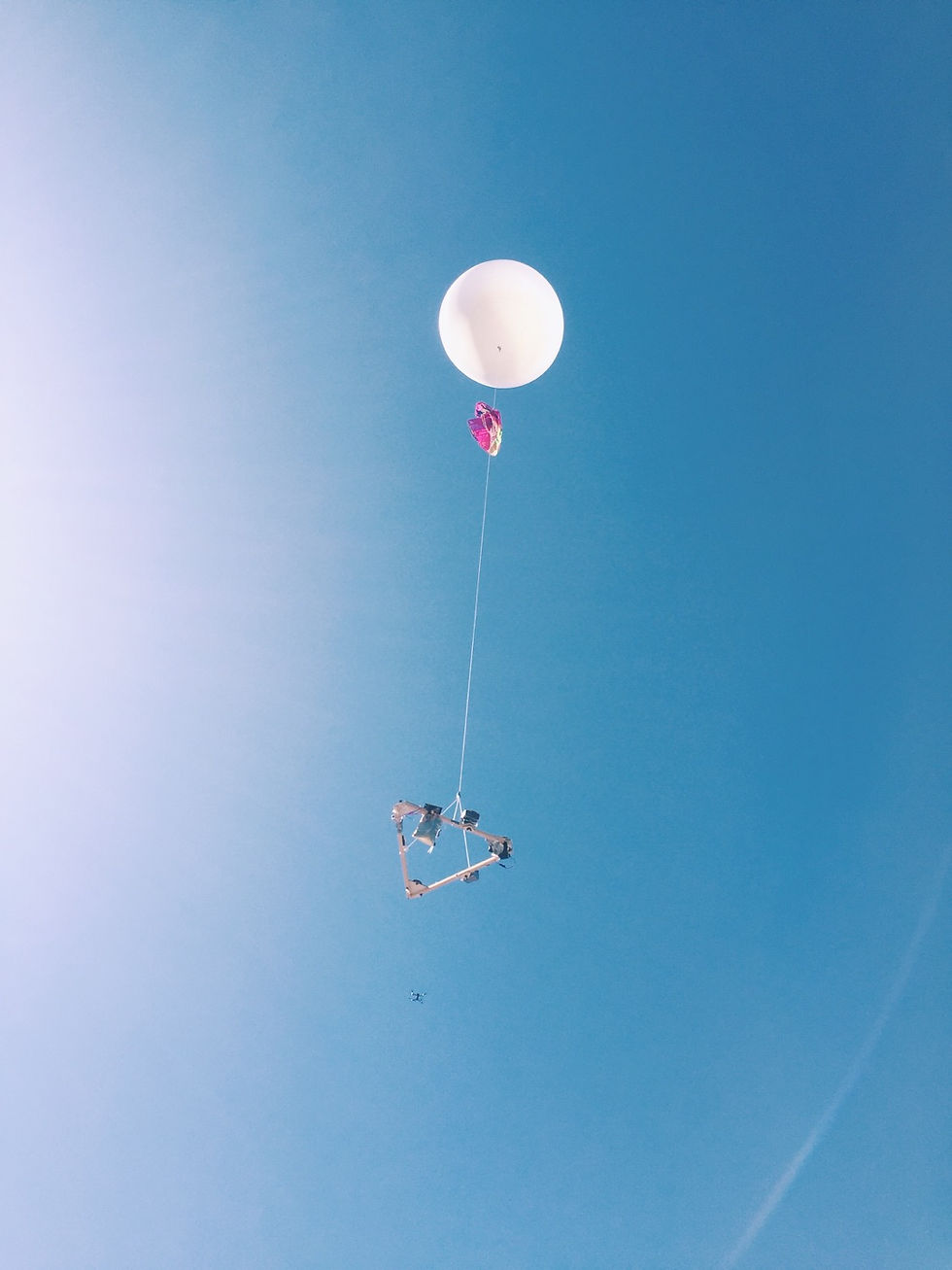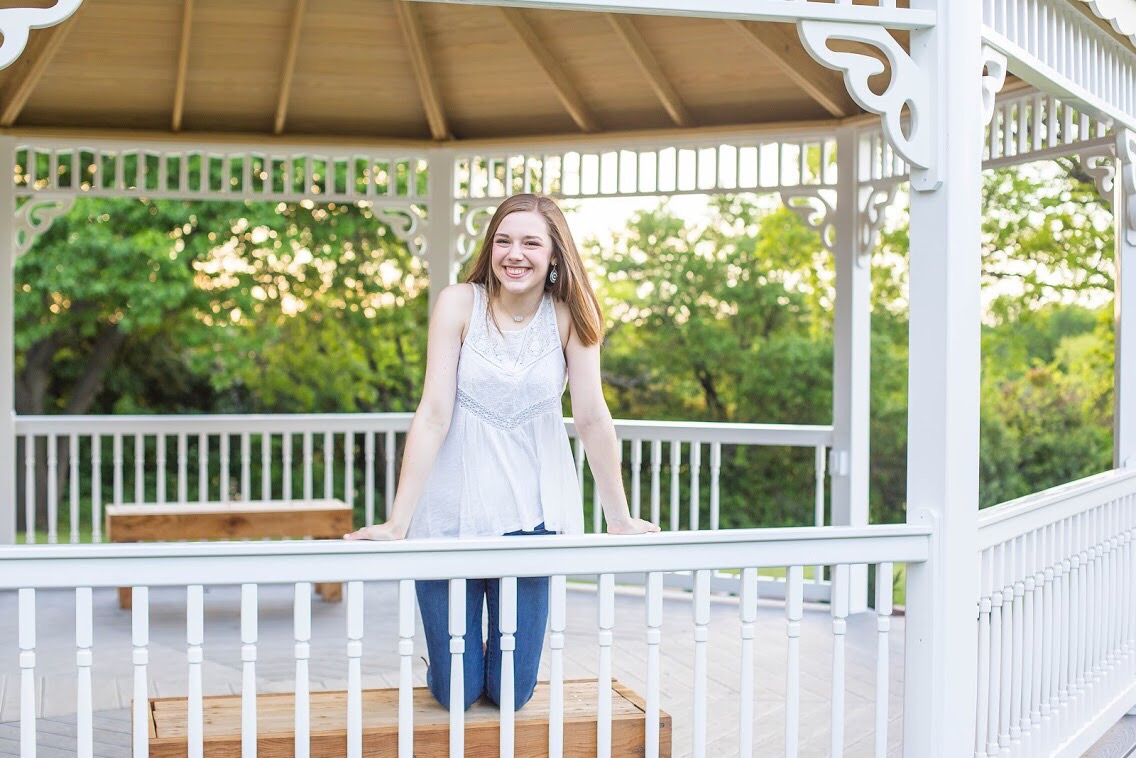up & away
- Katie Mulry
- Aug 15, 2019
- 5 min read
(a shorter version of this post can be found on backtospaceambassadors.wordpress.com)
I’ve always pictured the desert as flat and lifeless. I imagined sand stretching into the distance, with just a few cacti to break the monotony.
I definitely didn’t expect mountains.
I was in California for a high altitude balloon launch with Back to Space, and I’ve never lived a weekend as packed full of adventure. That weekend brought me through flights and road trips, last-minute design fixes and builds, the elation of a beautiful launch, and the struggle and awe and wonder of a hike through the Mojave Desert.
So let me back up, because the story of how I got here is pretty incredible, too. We’ve been planning to launch a high altitude balloon since March. The helium-filled balloon carries a payload up to the edge of space— GoPros, GPS and altitude trackers, and whatever other equipment needed for that mission. We added a camera and antennae to live-stream the video down to us on the ground and a digital drive with photos, songs, and notes that people submitted to us to send to near-space. We had to push the launch from March in Texas to August in California, and I wanted to go so badly. But only a few ambassadors were going to get to go due to funding availability. Who should go was determined by a social media competition, but because I was in Thailand on a mission trip at the time of the competition, I wasn’t able to participate. I was praying and praying to be able to go. I got a text my last weekend in Asia that I wasn’t going to be able to attend; that wasn’t a priority for company funds. I was incredibly disappointed, but I realized that I needed to just trust in where God wanted me and to be present there.
And a day later, I got a text that I could make it. He provides so well.
So needless to say, I was pumped. I hopped on a plane to California a week and a half after returning to America and landed in beautiful Ontario. An enormous mountain in the distance greeted us outside the California airport; the sunlight was bright and unfiltered, the sky cloudless and infinite, palm trees stretching up to brush it with their spiky green leaves. I was speechless.

The first night I hung out with all of the Ambassadors, swimming and hearing stories and eating sushi and Mexican food. The Ambassador community fascinates me, because we collaborate on projects constantly, but it’s all online. I feel simultaneously like I know and love these people and like they’re little more than strangers. Most of us have met twice. This trip was smaller and special because I got to spend so much time getting to know each of the incredible people I work with.
We were up at five am the morning of the launch, which was an hour away in Temecula, an adorable city with the cutest old town I’ve ever seen— wooden buildings from way back turned into trendy boutiques and train cars as monuments and mountains in the distance in far-off blues and grays. We saw the sunrise as we drove and parked outside of a children’s museum called PennyPickle’s workshop, a whimsical place where we launched.
After we got there it was a flurry of activity. The brisk California morning chilled our fingers as we attached our components to the balloon frame. We drilled some last-minute holes, mounted the GoPros, linked all our technology, and tied strings to the frame to connect to the balloon.

Then it was time to fill. Three of us threw on latex gloves to avoid getting oil from our skin on the balloon and hooked it up to the giant metal tank of helium. We held it out like folding a sheet as it slowly started to fill. The helium hissed and the balloon started to press itself out of our hands and into the sky, until we were cradling it and allowing it to lift beyond our fingertips. We weighed it with a spring scale to get the correct lift-to-weight ratio with our payload, filled some more, weighed again. The balloon kept getting higher and higher. It stretched over our heads, defying gravity.

Like with a party balloon, the high altitude balloon needs to be tied off. My job was to hold it tightly to make sure no air escaped and that the balloon didn’t soar away. I gripped the bottom with all my strength as Krystal wrapped rubber bands around it over and over again until it was secure. It bounced as we worked, straining against my grip towards the sky. I marveled at the fact that I was all that kept it from flying off into the wilderness— the success of the launch at that moment depended on me not letting go.
So I held on. We connected the parachute and payload, and then someone started a countdown, and it was 10, 9, 8... until 1 and I let go. The balloon whipped up into the sky, jerking the parachute, and we counted down again to release the payload, all hoping that the wind wouldn’t send it all crashing down.
3, 2, 1, and Farouk let go. The balloon shot up into the sky, right by us, then growing more and more distant. The rainbow-colored parachute vibrantly declared success against the vastness of the sky. We all looked around, hands covering our eyes, squinting in the sunlight, watching the project we’d just held fly up through the atmosphere.

We’d done it. I jumped and screamed and threw my camera on to catch everyone’s reactions, all of us talking a mile a minute about the wonder of sending something our hands made up into the sky. It had really worked. We had really done it.
And I know it’s mostly fiction that NASA mission control screams and celebrates at every successful point in the mission, but we absolutely did.
Then Trey said his live video feed was up, and we rushed over to see it. He had a huge blue twisting antenna pointed at the balloon and a box full of electrical components and a TV screen— a screen showing a live video feed from the camera that I helped mount to the balloon. Barely anyone in the balloon community does this. The ham radio people we worked with had never heard of that; they weren’t sure it was even possible. But we gave it a shot, and there was its shot, right on screen. California receded underneath as it rose aloft.
We stood there, awestruck, watching the dot of the balloon and the view on the screen.

Later, we’d go to retrieve it and face problems. Later, we’d hike 12 miles through the Mojave desert tracking the balloon’s GPS signal. Later we would adventure in a completely new way, but for now we were paving a way we’d never been. We were building, designing, learning, flying. Only Krystal and our ham radio contacts had done this before. We had no experience, so we had no expectations and no limits. None of us have engineering degrees yet. But we sent a balloon to the edge of space one Saturday in California. And if we can do that, what else can we do? What else can students across the world do? I think there’s such a fear of a project like that— what if it doesn’t work, or what new science would we do? People asked me our objective, and I explained the digital submissions and everything, but really, our objective was to learn and share that with other students. To explore, to fly, to go for the sake of going, because that’s why we go to space at all. The quest for knowledge can be defined by the scientific method, by data, by publishable findings, yes. But I think there’s something equally valuable in the less-defined knowledge and the lessons we didn’t even know we learned. I think there’s something equally valuable in seeing live video of the Earth, video you’ve seen a million times online, but in being amazed because this time, it’s yours. It’s taking ownership of individual exploration. It’s going— here on Earth and back to space.





Comments